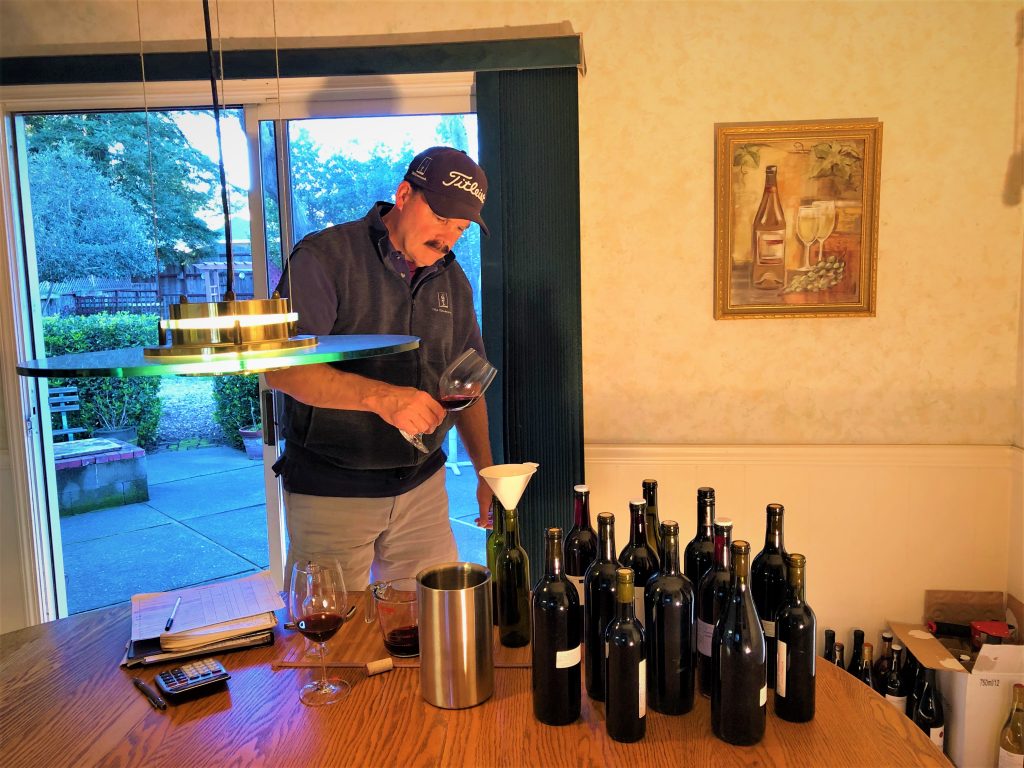On a very special edition of Grape Destinations, we learn the ins and outs of wine blending from an industry professional.
It really is an art.
Using years of experience through analysis and countless tasting trials we work to perfect the best end result, which is a real tasty wine!
Typically when blending wine, a rule of thumb is, what grows together goes together. For example Bordeaux blends of Cabernet Sauvignon, Merlot, Cabernet Franc, Petit Verdot and Malbec.
We, at Michael-Scott, start out with various lots of wine which may include contrasting lots of the same varietal, sometimes different vintages and appellations, as well as styles and characteristics. Tasting them individually while taking notes to discover what will best match and bring out the best from each lot is the ultimate goal.
RELATED: Grape Destinations: A Wine Glass Tutorial
We believe blending is like assembling a puzzle, while never easy, we place each piece, with what it brings and combine it with the other pieces, and what they bring, to complete the whole picture, which in this case, is wine. Blending makes the wine more complex and multi-dimensional. It really stretches out the layers of flavors.
Blending brings out the best of all the lots to achieve just the right amount of balance, color, acidity, fruit, structure (tannins & acidity), richness, aromatics and flavors.

Michael Quinn and the blending process | Photo: Michael-Scott Wines
Once the final blend is completed to everyone’s satisfaction, the individual barrels (lots), or percentages thereof, are combined together for additional aging and eventually bottling.
At Michael-Scott, we have always blended our wines for the reasons stated above. Blends are hugely popular right now. We even have a few of our own brands that are actually blends themselves. A couple examples; the Michael-Scott “Barrel Selection” Red Blend (Cabernet, Merlot, Zinfandel & Petite Sirah) and the Michael-Scott “Barrel Selection” White Blend (Chardonnay, Sauvignon Blanc, Pinot Grigio & Semillon).

